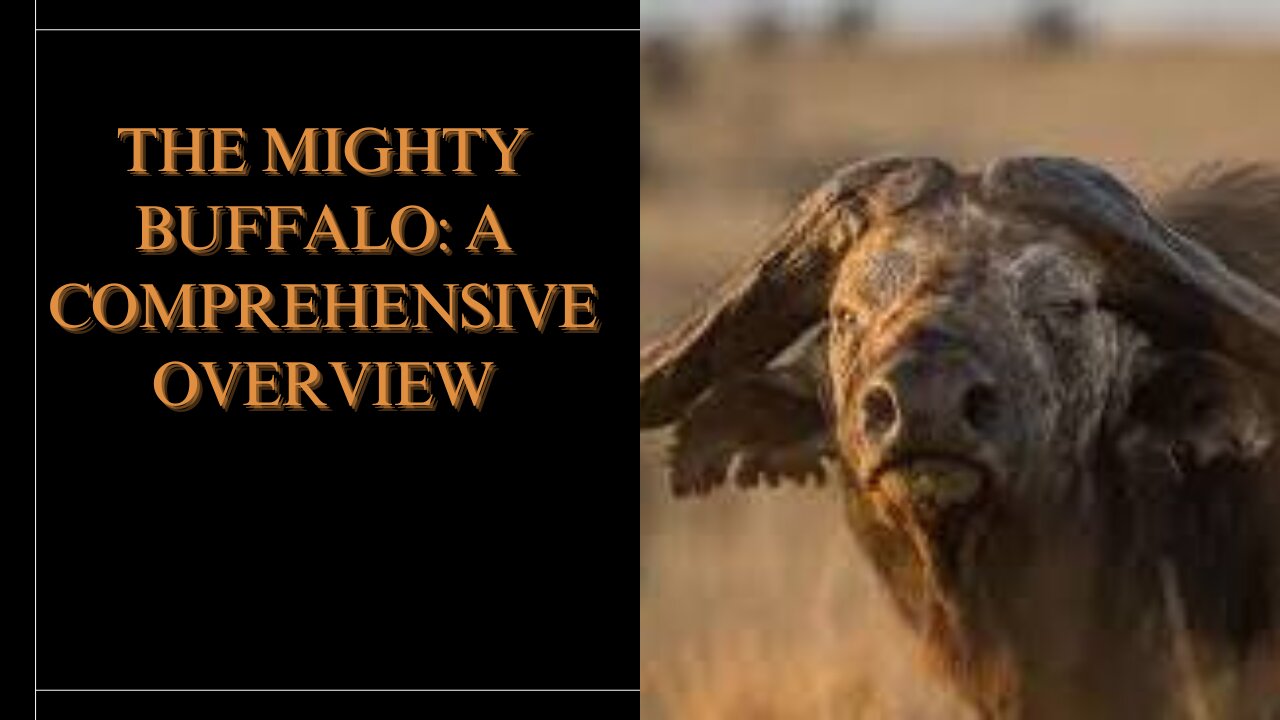Premium Only Content

Understanding the Majestic Buffalo | History, Habitat, and Conservation!
Your Quaries:-
The buffalo, often synonymous with the American bison, is an iconic symbol of the Great Plains and an integral part of North America's natural and cultural heritage. These majestic creatures, once numbering in the millions, roamed vast grasslands, playing a crucial role in the ecosystem by maintaining the balance of plant and animal life. The buffalo holds significant historical and cultural importance, especially for Indigenous peoples, for whom it was a source of food, clothing, and tools, as well as a central element in spiritual and social practices.
Buffalo are characterized by their massive heads, humped shoulders, and shaggy coats, adapting them to a range of environments from prairies to forests. Their social structure is fascinating, with herds often comprising extended family groups led by older females. These herds exhibit complex behaviors, including cooperative care of the young and sophisticated communication methods.
However, the buffalo's history is also marked by near-extinction. In the 19th century, extensive hunting and habitat destruction reduced their population to a few hundred individuals. Conservation efforts in the 20th century, led by Indigenous communities, conservationists, and government agencies, have been pivotal in bringing buffalo back from the brink of extinction. Today, buffalo conservation focuses on habitat restoration, genetic diversity, and sustainable management practices.
Understanding the history, habitat, and conservation efforts surrounding buffalo is crucial for their continued survival and the health of the ecosystems they support. By appreciating these magnificent animals, we can better advocate for their protection and the preservation of our natural heritage.
-
 8:40
8:40
Tundra Tactical
18 hours ago $1.50 earnedThe Executive Order Wishlist.
6.49K1 -
 7:22:52
7:22:52
SpartakusLIVE
17 hours agoSaturday SPARTOON Solos to Start || Duos w/ StevieT Later
94.7K2 -
 28:40
28:40
SLS - Street League Skateboarding
8 days agoTOP MOMENTS IN WOMEN’S SLS HISTORY! ALL THE 9’s - Rayssa Leal, Leticia Bufoni, Chloe Covell & more…
53.5K11 -
 2:03:03
2:03:03
The Connect: With Johnny Mitchell
14 hours ago $2.09 earnedHow Mexican & Chinese Cartels Control Illegal Marijuana Cultivation In America Using SLAVE Labor
8.92K3 -
 14:46
14:46
Mrgunsngear
15 hours ago $1.02 earnedPrimary Arms GLx 1x Prism With ACSS Reticle Review
8.14K5 -
 22:37
22:37
Degenerate Plays
15 hours agoI'm A Psychic Now - Elden Ring : Part 73
3.03K -
 2:32:02
2:32:02
Jamie Kennedy
8 hours agoEp. 195 Horror Legend Barbara Crampton
4.86K -
 23:00
23:00
Exploring With Nug
1 day ago $32.91 earnedHis Truck Was Found Crashed in the Woods… But He’s Gone!
135K8 -
 27:09
27:09
MYLUNCHBREAK CHANNEL PAGE
1 day agoDilmun: Where Life Never Ends
102K59 -
 2:58:32
2:58:32
Slightly Offensive
19 hours ago $106.87 earnedHas Trump FAILED US? The ABSOLUTE STATE of The Right Wing | Guest: Nick Fuentes
151K211